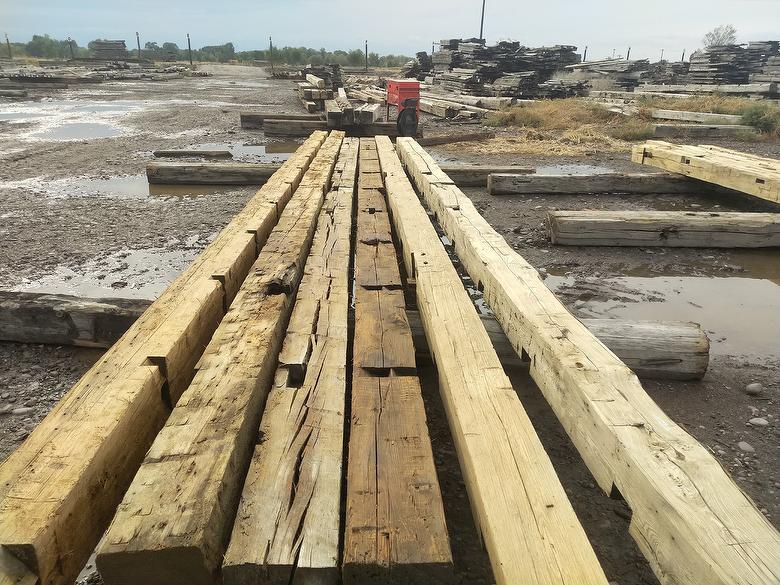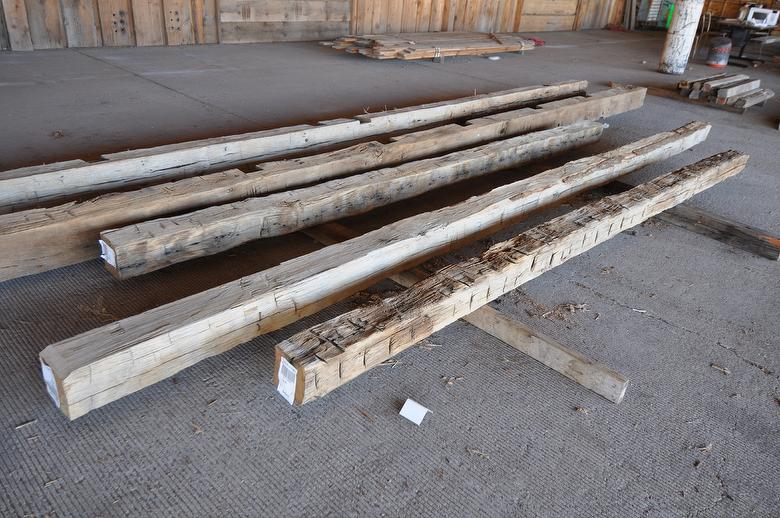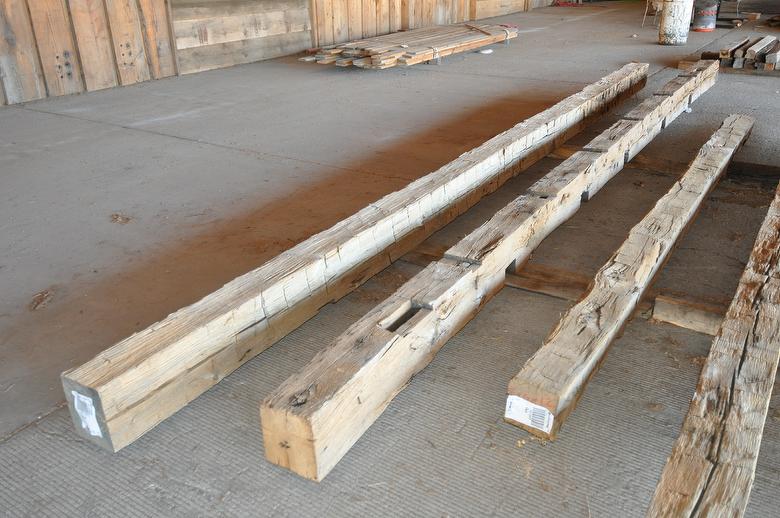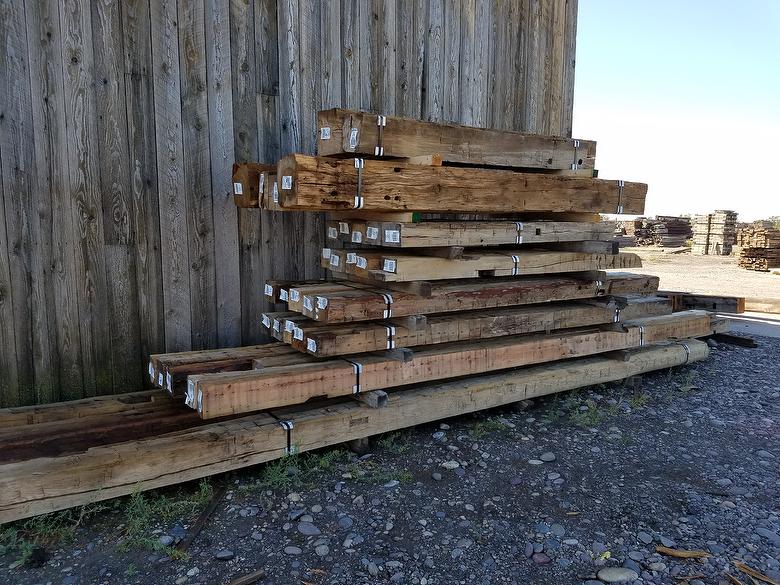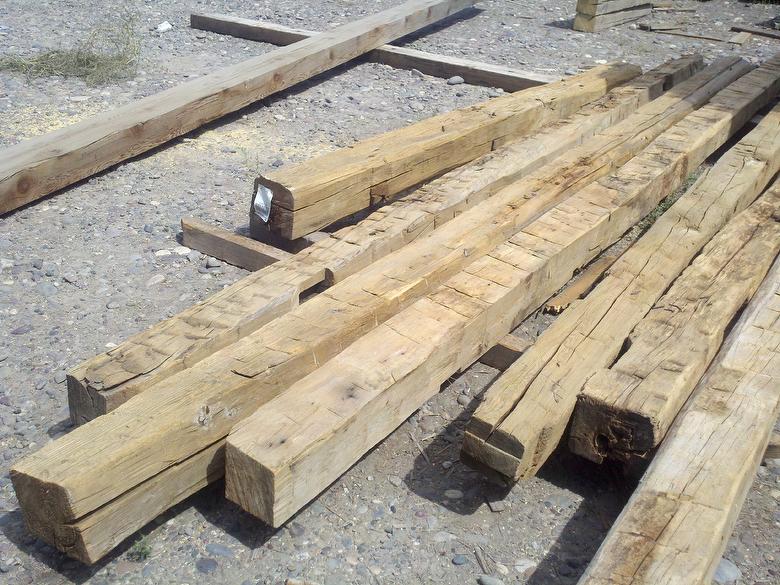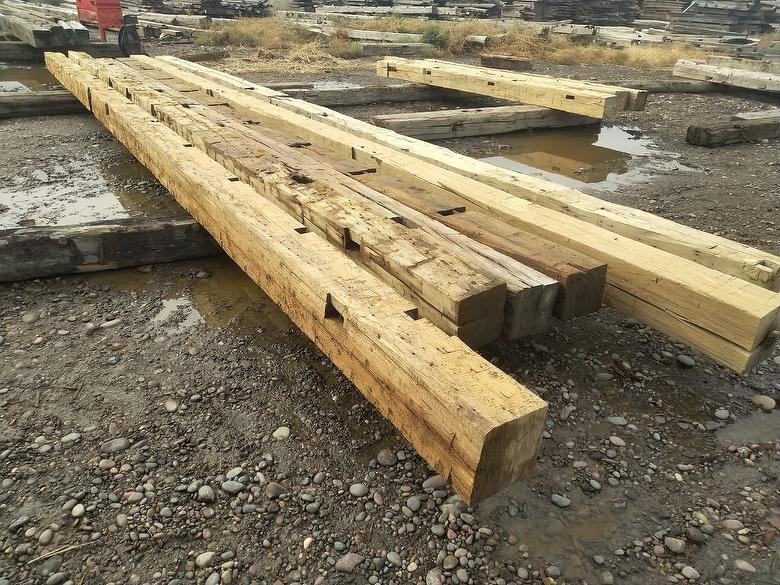Pressure-Washed Hand-Hewn Timbers
Pressure-Washed Hand-Hewn Timbers
A good product for those who prefer brown color tones; timbers with rectangular dimensions will likely have 1 or more fresh-cut (non-hewn) faces
Specification Sheet #7100 - Hand-Hewn/Sawn Weathered Timbers
Request Quote
Height
Width
Length
Quantity
6-12"
6-12"
to 32'
min: 1 each
Related Productline Pages
Hand-Hewn
Specification Sheet #7100 - Hand-Hewn/Sawn Weathered Timbers
Introduction
When the first settlers moved into new regions of our expanding nation, they cleared small plots of ground for subsistence farming and used the felled trees for logs and timbers to construct homes for themselves and barns for their livestock. Because these resourceful settlers had to use what was available to them, they often did not discriminate among wood species--if the trees they felled were solid and durable they were used in the needed structures. We have found that old barns and other structures often also involve a mix of hewn and sawn timbers; our theory is that this mix was often driven by sawmill equipment available in the local community (i.e., smaller/shorter timbers were sawn, while larger/longer timbers (too large for the local sawmills at the time) were hewn.) It is in that same spirit of resourcefulness, economy, and good stewardship that Trestlewood offers its Hand-Hewn/Sawn Weathered Timbers.
Species
Mixed Species. May include Oak, Elm, Hickory, Ash, Maple, Beech, Poplar, Pine, Fir, Spruce, Cedar, others. Species mix will be different from batch to batch. Trestlewood offers an Oak Hand-Hewn Timber product, but otherwise does not sort Hand-Hewn Timbers for a specific species.
Source
Barns, corncribs, stables, mills, homes and other buildings and agricultural/industrial structures from different locations in North America
HC/FOHC
Hand-Hewn timbers are almost exclusively heart center timbers; usually moderate to very tight growth rings.
Metal
Nails, bolts and other fasteners are removed or occasionally cut flush or broken off inside the beam. Staining around nail and bolt holes is common.
Mortise Pockets/Notches/Holes
Mortise pockets and notches from the original joinery are common. Nail, bolt, peg and other fastener holes are allowed. The quantity and size of mortise pockets and holes can vary widely from timber to timber, with some timbers containing very few and others containing frequent mortise pockets, notches, peg holes and nail holes.
Checking/Cracks
Hand-Hewn timbers generally have a check from the heart center to one of the faces of the timber. In addition, timbers can have surface checking and cracks, moderate butt checking and minor end splitting.
Moisture Content/Stability
Hand-Hewn timbers are generally seasoned and are more stable and less prone to shrinkage than are green timbers. Hand-Hewn timbers are typically stored outside --> they can be wet in the winter and other periods of wet weather.
Surfacing
Weathered (degree of weathering varies); original timber surface was hewn by broad axe or adze or sawn (where hewn, amount/depth of hewing varies; timbers 8x8 and under are more likely to be sawn than timbers larger than 8x8), and has been weathered and worn over time; surface degradation (water damage or surface rot or "punkiness") is common. Trestlewood's standard hand-hewn/sawn timber packages allow a mix of hewn and sawn timbers; the sawn timbers will often be Trailblazer timbers (with mortise and tenon pockets, etc)
Standard Dimensions
a) Cross-sections: to 10x10; b) Lengths: to 16'; c) Square: Hand-Hewn timber dimensions are generally in the vicinity of square (i.e. hand hewn timbers which are significantly wider than they are deep (ex. 6x12) are difficult to come by); d) Size Flexibility: the more latitude the customer can provide in acceptable timber sizes, the better able Trestlewood is to meet the customer's timber needs in an economical and timely manner; e) Manner of Measurement: dimensions can be up to 3/4" nominal. Where timbers vary in dimension at different points along a given timber, Trestlewood will use its best efforts to average cross-section measurements to arrive at an equitable count. Lengths are billed on actual length shipped.
Available Dimensions
a) Cross-sections: depending on inventory in stock (sizes available in the past include 10x12, 12x12, 12x13 others);
b) Lengths: depending on inventory in stock. Please contact your Trestlewood representative for available sizes.
b) Lengths: depending on inventory in stock. Please contact your Trestlewood representative for available sizes.
Weight
Depending on species mix. Typically, approximately 3.5 pounds per board foot
Color/Appearance
Hand-Hewn timber colors vary -- common colors include browns (common for interior weathered timbers), grays (common for exterior weathered timbers) and combinations of browns and grays. Any sort for colors has to involve a range of acceptable colors as consistent coloration is not a feature of this product.
Appearance Variation
Weathered timbers will generally vary in appearance from piece to piece and even within a piece. The weathering (amount, mix of colors, etc) and other characteristics of one face can be substantially different than the weathering and other characteristics of another face. Some weathered timbers are cut from larger weathered timbers, giving them one or more fresh-sawn faces.
Trestlewood sometimes uses one or more "juicing" processes to help fresh-sawn and/or less weathered/aged faces blend in with weathered/aged faces. All else being equal, juicing is more likely to be used in situations where (a) timbers are cut from larger timbers (thereby creating fresh-cut faces); (b) Buyer wants all (or most) faces to look weathered/aged; and/or (c) Buyer desires to increase the consistency of the weathered/aged look from face to face.
Trestlewood sometimes uses one or more "juicing" processes to help fresh-sawn and/or less weathered/aged faces blend in with weathered/aged faces. All else being equal, juicing is more likely to be used in situations where (a) timbers are cut from larger timbers (thereby creating fresh-cut faces); (b) Buyer wants all (or most) faces to look weathered/aged; and/or (c) Buyer desires to increase the consistency of the weathered/aged look from face to face.







